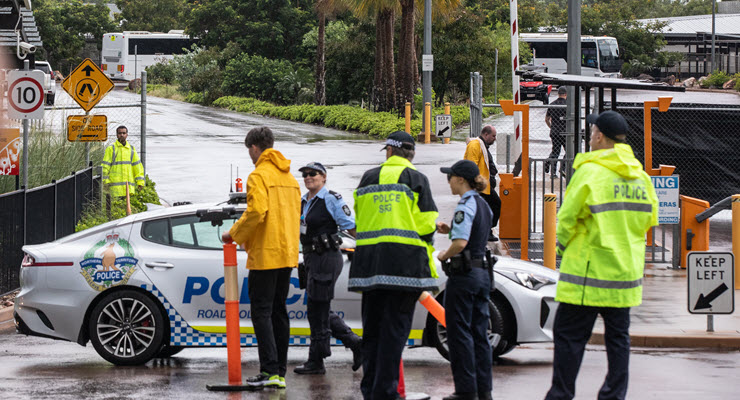
Queensland Premier Annastacia Palaszczuk says she is considering using mining camps to quarantine international travellers, and will raise the option at tomorrow’s national cabinet meeting.
The proposal comes after a highly-infectious variant of COVID-19 was linked to six infections on the same floor of a Brisbane quarantine hotel.
“Was it in the air conditioning? Was it movement? Was it picking up something? We just don’t know those answers yet,” Palaszczuk said.
But is it actually viable to quarantine travellers in a remote camp? And what would it look like?
How did we get here?
Queensland health authorities first detected the new strain in a returned traveller, before also finding it had spread to a hotel cleaner and her partner.
Genomic testing has since linked three more cases in quarantined travellers to the same strain, but it’s still not known how they all became infected.
The remaining 129 people in quarantine — some in their final days of quarantine — were evacuated to another hotel, and have to restart their 14 day quarantine period, while 226 staff and 250 guests who left the hotel since December 30 will have to self isolate for two weeks.
University of Sydney global health security specialist Associate Professor Adam Kamradt-Scott tells Crikey there are a whole series of possibilities about how the virus spread from one traveller to others.
“This is a highly infectious variant and you have to expect it will take advantage of any breach,” he said.
“It does speak to the need for a high level of vigilance with regard to infection control.”
The National Review of Hotel Quarantine recommended the Australian government consider “the establishment of a national facility for quarantine to be used for emergency situations, emergency evacuations or urgent scalability”. So far no such national facility has been arranged.
What’s being considered?
In the Northern Territory, a disused workers camp 25 kilometres south of the Darwin CBD has been repurposed as a quarantine facility for both returned travellers and those who can’t isolate at home.
Early on in the pandemic, citizens evacuated from the coronavirus outbreak in China were sent to Christmas Island to quarantine. Conditions on the island have previously been criticised by the UN and human rights groups. Extra medical staff and equipment were later sent to the island to accommodate the travellers.
But the reality isn’t so simple, Kamradt-Scott says.
“[Remote quarantine] creates a series of risks,” he said.
Transporting people in and out of rural areas was a logistical nightmare, he said. Plus, questions remain about the quality of healthcare in remote locations.
“If they develop serious illness, they would need to be repatriated into an urban area to receive care which presents transport risks and clinical issues on route,” he said.
The health of staff was also a concern, with workers required to relocate away from their homes and families, “creating its own psychological stress and issues”.
Finally, remote quarantine sent a bad message to residents of the communities.
“It sends a signal to rural communities that they’re less important than people living in cities because city people aren’t prepared to put up with the risk,” Kamradt-Scott said.
“They already struggle with access to health services … it would be poorly received.”
Breaches are the nature of the beast
Walter and Eliza Hall Institute epidemiologist Professor Ivo Mueller tells Crikey that moving quarantine centres just moves the problem.
“The question is more a matter of how well quarantine is handled,” Mueller said. “I think it can be done in either remote or urban locations — if done properly. No system is always perfect. It’s run by humans and humans make errors.”
As long as we accept returned travellers, we’ll have issues with quarantine, he says: “It’s the nature of the beast.”
It’s important to remember that Australia is handling the virus incredibly well compared to other countries, Mueller said.
“The overall system is working really well and the lastest breaches have not led to major epidemics in Adelaide, Sydney, and now in Brisbane,” he said.
“We need to have a bit of perspective.”
This morning Queensland recorded no new local cases of COVID-19 for the second day in a row.








Crikey is committed to hosting lively discussions. Help us keep the conversation useful, interesting and welcoming. We aim to publish comments quickly in the interest of promoting robust conversation, but we’re a small team and we deploy filters to protect against legal risk. Occasionally your comment may be held up while we review, but we’re working as fast as we can to keep the conversation rolling.
The Crikey comment section is members-only content. Please subscribe to leave a comment.
The Crikey comment section is members-only content. Please login to leave a comment.